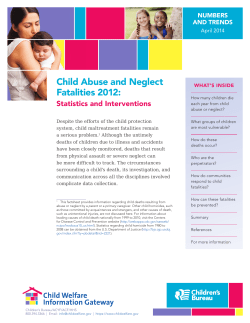
Union Construction Sites Have Higher Fatality Rates than Non
Union Construction Sites Have Higher Fatality Rates than Non-union Sites Fatality rates at union construction sites are higher than fatality rates at non-union construction sites, according to a new analysis by the New York State Association for Affordable Housing (NYSAFAH). There has been a strong debate in recent years over how safety at union and nonunion construction sites compare, with union advocates alleging that construction sites that are unionized are safer than non-union construction sites. This argument has become part of the larger debate over whether to require the prevailing, or union-negotiated, wage at affordable housing projects that receive 421-a property tax abatements. But a new analysis of the actual data reveals that the opposite is true. A study of New York City construction site fatalities based on data from the federal Occupation and Health Administration (OSHA) reveals that the rate of fatalities between 2008 and 2014 was higher at union sites than non-union sites. Construction Fatalities and Labor Status 2008-2014 During this time period, the average labor participation rate at New York State construction sites was 73% non-union and 27% union. However, the number of fatalities shows that the fatality rate at union construction sites was higher than the union participation rate. There were 93 construction site fatalities in New York City between 2008 and 2014; 60 fatalities or 65% occurred at non-union sites while 33 or 35% occurred union sites. Given that New York City safety standards do not distinguish between union and non-union jobs, the fatality rate for both union and non-union sites should be in proportion to the participation rate. This data proves that this is not the case. Year-by-Year 2008-2014 Fatal Incidents and Union Participation at NYC Construction Sites The above chart shows that the percentage of fatalities of union workers was often higher then the union labor participation rates between 2008 and 2014. If union jobs were safer, the percentage of fatal incidents would be lower than the participation rate. Conclusion This analysis demonstrates that there is no evidence to suggest that non-union construction sites are less safe than union sites, rather the opposite. The reason is that both union and non-union developers are committed to worker safety and that all construction sites are subject to the same New York City, State, and Federal safety standards. The fact is that all private construction sites in the City face unannounced inspections by the Department of Buildings. And all workers must comply with the same certification requirements for all skills, from operating equipment to scaffold safety. It is strong standards, not the presence of a union, that protects worker safety. Since 2008, New York City has enacted more than 25 laws to enhance safety at construction sites, including new safety training course, stronger certification for crane operators and third-party inspections of construction sites. From 2003 through 2014, affordable housing projects built by NYSAFAH member developers saw two fatalities. This represents approximately 1 fatality per 82,500 affordable units created and preserved, or just 1% of overall construction fatalities during that time period. ###
© Copyright 2025









